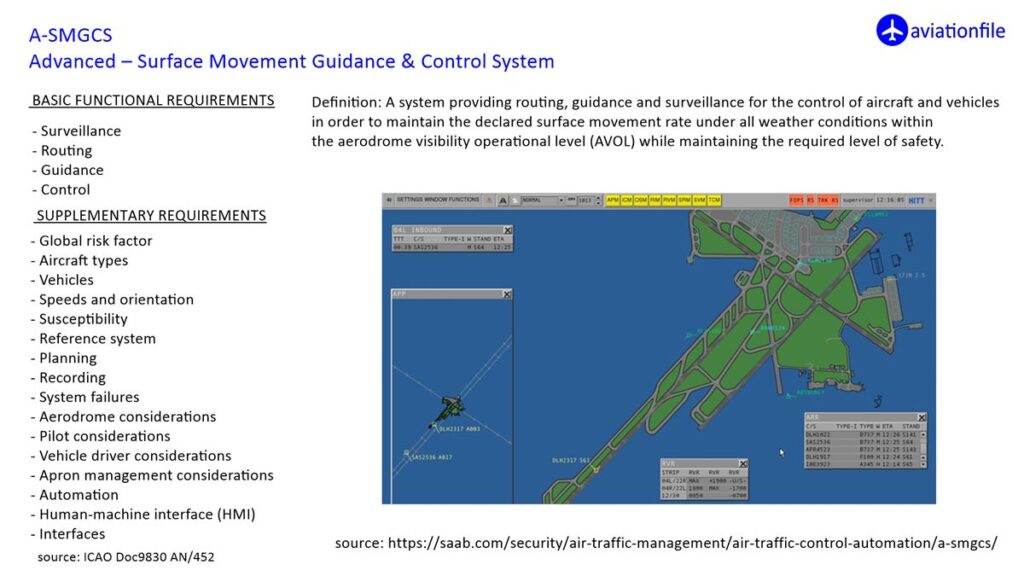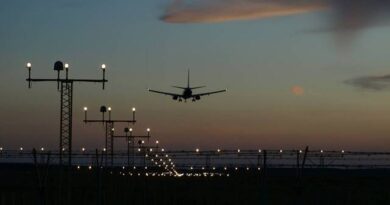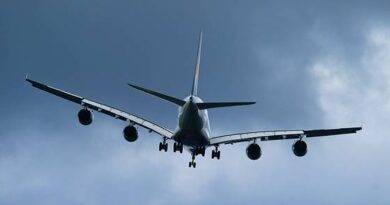The Digital Divide and Its Impact on Global Air Traffic Management
Introduction: Understanding the Digital Divide in Air Traffic Management
The “digital divide” refers to the gap between those who have ready access to modern information and communication technology (ICT) and those who do not. This divide often highlights disparities between countries, regions, or organizations based on their capacity to adopt digital tools effectively. In sectors critical to public safety, such as air traffic management (ATM), the digital divide can have profound implications. This article evaluates the global digital divide within air traffic management, particularly focusing on the discrepancies observed in air traffic control (ATC) tower infrastructure.
The Digital Divide in Air Traffic Management: An Overview
Defining the Digital Divide in Air Traffic Management
In the context of ATM, the digital divide signifies the uneven access to advanced technology and automation in ATC towers worldwide. Modern ATC systems increasingly rely on digital communication, real-time data exchange, automation, and artificial intelligence to improve safety and efficiency. However, not all ATC towers or countries have the resources to implement these technologies equally, creating a gap between technologically advanced and under-resourced regions.

Current Global Situation: A Landscape of Technological Disparity
The state of ATC infrastructure varies greatly:
- High-Income Countries: In North America and Europe, significant investments in technology enable automated systems, remote towers, advanced radar systems, and AI-driven decision support tools. The U.S. Federal Aviation Administration (FAA) and Europe’s EUROCONTROL lead in implementing state-of-the-art ATM systems, creating a robust, digitally integrated ATM network. For instance, remote digital towers are operational in several European countries, reducing costs while enhancing flexibility and efficiency.
- Emerging Economies: Middle-income countries such as China, Brazil, and India are investing heavily in ATM modernization but face challenges due to the high cost of implementation and rapid air traffic growth. While digital upgrades are underway, these countries still experience a gap compared to their higher-income counterparts in terms of automation and integration with international networks.
- Low-Income Countries: In many African and developing Asian nations, ATM systems are often outdated, with minimal automation and reliance on basic radar and communication technologies. The absence of digital infrastructure in these regions contributes to the risk of inefficient and potentially unsafe air traffic management practices.
Implications of the Digital Divide on Air Traffic Control Towers
Operational Safety Concerns
The digital divide in ATC towers directly affects the operational safety of air traffic management. Key safety implications include:
- Delayed Communication: Towers without modern digital communication systems may experience delays in data transmission, impacting real-time decision-making. Without rapid communication, ATC personnel face challenges in mitigating conflicts and managing high-traffic scenarios, increasing the potential for accidents.
- Limited Surveillance: Advanced radar and surveillance systems, such as ADS-B (Automatic Dependent Surveillance–Broadcast), are pivotal for tracking aircraft movements. Towers lacking these technologies have limited awareness of aircraft positions, especially in adverse weather or remote locations, compromising safety standards.
- Inadequate Automation: Automation in ATC towers enables the handling of high-traffic volumes without overwhelming human controllers. Towers without automated systems rely on manual data management, leading to increased workload, human error, and ultimately, compromised safety.
ATC Training Infrastructure and the Digital Divide in Aviation Safety
The digital divide in air traffic control (ATC) training infrastructure presents significant challenges for global air traffic safety. Advanced training facilities in developed countries provide ATC personnel with hands-on experience using high-tech simulations, automated systems, and real-time data management tools. Conversely, many developing regions lack these resources, often relying on outdated equipment and limited access to modern training technologies. This gap impacts the readiness of ATC staff to manage complex airspace effectively, contributing to operational inconsistencies and potential safety risks. Enhancing ATC training infrastructure in under-resourced areas is essential for a globally standardized, high-safety airspace system.
Bridging the Digital Divide with A-SMGCS in Air Traffic Management
Advanced Surface Movement Guidance and Control Systems (A-SMGCS) play a crucial role in bridging the digital divide in air traffic management. These systems enhance airport surface operations by providing real-time surveillance, guidance, and control. However, not all regions have access to A-SMGCS due to high implementation costs and infrastructure requirements. Developed countries widely implement A-SMGCS for safer, more efficient air traffic management, while lower-income countries often rely on basic, less accurate systems. This disparity affects global aviation safety and operational consistency. Expanding A-SMGCS to under-resourced areas could help close the digital divide, enhancing worldwide air traffic safety and efficiency.

Economic Impact on Aviation Efficiency
The economic implications of the digital divide in ATM are significant. Regions with outdated ATC systems experience:
- Inefficiencies in Air Traffic Flow: Limited digital capacity leads to delays in air traffic flow management, resulting in increased fuel consumption, time delays, and added operational costs. Studies indicate that outdated ATM systems can lead to longer flight times and congestion, especially at busy airports.
- Reduced Competitiveness: Countries with inadequate ATM infrastructure may find it challenging to attract international airlines, reducing tourism and trade opportunities. Airlines prefer routes with efficient ATC services to ensure timeliness and cost-efficiency.
The Consequences of the Digital Divide in Air Traffic Management
The digital divide in ATM has far-reaching consequences:
- Increased Safety Risks: The inability to access advanced surveillance and communication tools in certain regions creates a safety imbalance, increasing the risk of accidents or near-misses. Developing regions may experience higher accident rates due to inadequate ATM infrastructure, undermining the global goal of safe, unified airspace.
- Reduced Global Interoperability: Air traffic management relies on interoperability for seamless global air travel. Disparities in digital infrastructure limit cross-border collaboration, creating challenges for airlines and controllers operating in multiple jurisdictions. Inefficient or inconsistent data exchange can disrupt global air traffic flow and hinder the standardization efforts of the International Civil Aviation Organization (ICAO).
- Environmental Impact: Inefficiencies in air traffic flow, exacerbated by outdated ATM systems, lead to increased fuel consumption and greenhouse gas emissions. The absence of optimized routes and real-time adjustments to traffic patterns contributes to the aviation industry’s environmental footprint, challenging global climate goals.
The Need for a Safety-First, Technology-Driven Approach
To bridge the digital divide and promote safer skies, a strategic, safety-focused approach is essential. Key recommendations include:
1. Global Investment in Digital Infrastructure
To mitigate safety risks, international stakeholders, including governments and aviation organizations, should prioritize investments in ATM technology for under-resourced regions. ICAO and the United Nations could spearhead initiatives to channel resources toward low-income countries, ensuring that all ATC towers have access to basic digital tools, such as radar and real-time communication systems.
2. Public-Private Partnerships for Technological Development
Collaborations between public and private sectors could ease the financial burden of technology upgrades. Partnerships with private firms specializing in ATC technology could enable cost-sharing models, making it more affordable for developing countries to modernize their ATM infrastructure.
3. Emphasis on Remote and Digital Towers
Remote and digital towers offer a cost-effective solution for regions with limited resources. By centralizing air traffic control functions and utilizing remote video feeds, countries can reduce infrastructure costs while maintaining high standards of safety and efficiency. Sweden, Norway, and the United Kingdom have already demonstrated the success of remote towers, which can serve as a model for adoption in developing countries.
4. Enhanced Training Programs for ATC Personnel
Implementing new technology without proper training can compromise safety. Comprehensive training programs are essential to equip ATC personnel with the skills needed to operate advanced digital systems. International organizations can establish standardized training modules to ensure consistent competence across regions.
5. Global Standardization and Policy Coordination
To ensure interoperability, international policy coordination is essential. Standardizing digital tools and communication protocols would facilitate data exchange between countries, promoting global cooperation and enhancing overall air traffic safety. ICAO’s role in setting these standards is critical to ensure a unified approach to ATM technology worldwide.
Conclusion: Bridging the Digital Divide in Air Traffic Management
The digital divide in air traffic management is a complex issue with serious implications for safety, economic efficiency, and environmental sustainability. Bridging this divide requires collaborative efforts from both developed and developing nations, with support from international aviation organizations. A safety-first, technology-driven approach that includes investments in digital infrastructure, public-private partnerships, remote tower adoption, and standardized training programs can help ensure equitable and efficient air traffic management globally.
References
- Federal Aviation Administration (FAA). (n.d.). “NextGen: Implementation and Benefits.” Retrieved from FAA.gov
- EUROCONTROL. (2022). “Digitalisation in Air Traffic Management.” Retrieved from eurocontrol.int
- International Civil Aviation Organization (ICAO). (2021). “Air Traffic Management Global Standards.” Retrieved from icao.int
- International Transport Forum. (2020). “The Impacts of Automation in Air Traffic Management.” Retrieved from itf-oecd.org


